#i had to screen capture this from youtube (i live in north america and used a vpn
Text
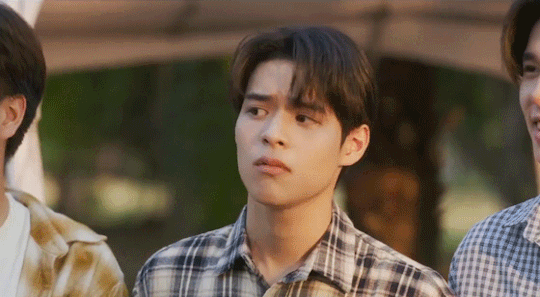
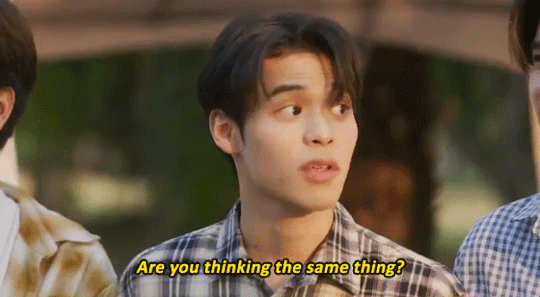
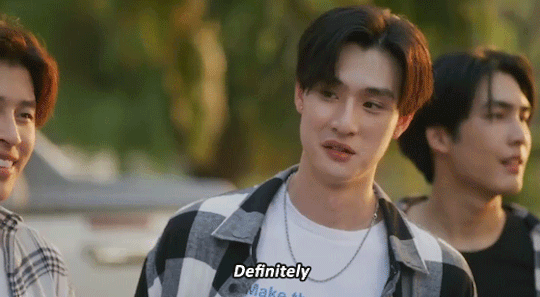

when two like minded people meet and become immediate besties
#we are#we are the series#we are series#weareedit#asianlgbtqdramas#dailyasiandramas#gmmtv#cutest part of this episode#pretty sure we all were waiting for the moment these two met lol#onigiri gifs#wearepost#also - anyone know where i can download hq copies of these episodes?#i had to screen capture this from youtube (i live in north america and used a vpn#that didn't let me download it from there for some reason)
103 notes
·
View notes
Text
How Nike’s Turning Play Into a Lifestyle for Kids

According to NIKE
Jumping rope with a garden hose. Holding a squat while you create a secret handshake with your bestie. Hanging from monkey bars as you see LeBron James get quizzed on his second best sport.
You must be watching Playlist.
The episodic Nike YouTube series, now entering its ninth season, launched two years ago with one clear goal: “We wanted to show kids that sport, at its core, is all about play,” says Jessa Moon, Global Brand Director for Nike Kids. “It doesn't have to be soccer or football or traditional sports — it can be a mash-up or something totally wild and different. We wanted to inspire kids to think about moving their bodies in all kinds of ways and having it be about joy as opposed to winning or competition.”
Hosted by kid athletes like 13-year-old skateboarder Sky Brown and her 9-year-old brother, Ocean, a typical Playlist episode takes kids through fun and funny movement challenges, ratchets up the silliness with sound effects and slapstick gags, and includes appearances from star athletes like Russell Wilson, Mo Farah, Bebe Vio and the aforementioned King James — all of whom are game to be goofy and show off their inner kid on-screen.
Season after season, the series has grown its presence and audience, fine-tuning on its primary channel, YouTube, and streaming across Instagram, TikTok and Snapchat. Playlist has also found its place in the Nike digital ecosystem, alongside its adult counterparts like the Nike Run Club and Nike Training Club apps, proving that Nike offers not just product, but also day-to-day service and benefits to all its consumers.
The constant throughout, says Moon, is that all Playlist episodes are rooted in fun, because when kids are having fun, they’ll be naturally motivated to move.
For parents, inspiring kids to want to move is more important — and harder — than ever. Today, only one in five kids get the physical activity they need to be healthy and successful. Parents also have even more on their plates, often acting as a child’s cook, chauffeur, stylist, teacher and coach within the course of day.
Playlist is one way Nike sought to help solve this universal problem by providing resources that get kids and their families to enjoy movement together, improving the relationship and bond between grown-up and kid, and setting kids up for a lifetime of healthy habits and movement that they could one day pass on to the next generation.
Doing that meant understanding that the words “play sport” have tension built into them, says Rami Jabaji, VP of Kids Global Brand Management. To today’s kids, explains Jabaji, sport can feel too structured, too competitive — high stakes, yelling coaches, parents pushing them into it. “They feel disconnected from its benefits, from its joy,” says Jabaji. There’s another kind of tension too: Gen Alpha is the most dedicated to activism, yet the least physically active. That’s partly because they don’t fully resonate with today's definition of traditional sport, says Jabaji. “While young kids naturally enjoy movement and play, it’s the moment when sport takes a turn — when it becomes too structured and rule-bound, not based in freedom and discovery — that kids start to opt out, and they trade physical activity for sedentary screen time,” he says. “The screen provides them with a tool that fulfills their needs in a deeper way than sport does.”
How do you solve for that?
“Our answer was, ‘We have to make sport fun again,’” says Jabaji. “We have to anchor it in play and get back to why kids fell in love with sport in the first place.”
More Ways Nike Serves Kids
Cool Gear, Just for Them Listening to what kids need to move and play and solving kid-specific challenges are hallmarks of Nike Kids product design. That’s reflected in extended sizing, gender-inclusive apparel lines, and gender-inclusive shoes like the new Nike Air Zoom Crossover. The kid-informed basketball shoe features a last with room in the toe box for growing feet, a snug fit and support around the ankle, and a playful “Game Mode” written on the tongue.
Coaches Who Make a Difference Sport is uniquely positioned to help kids handle stress and thrive when the environment is fun, inclusive, and served up by caring and trained coaches. That’s why Nike partnered with ICOACHKIDS to create an accessible, approachable series of coaching essentials that preps anyone to be a volunteer youth coach. The ICOACHKIDS coaching essentials are free and available on the Nike Training Club App and Nike Run Club App in Europe, the Middle East and Africa; if you already have one of the apps on your phone, click here to check out the essentials now.
Nike is also the founding partner of The Center for Healing and Justice in Sport (CHJS), a nonprofit organization fueling a movement to bring research-backed, healing-centered sport training to youth coaches across North America. “A lot of young people who show up to sport experiences may be treading water in other parts of their lives,” says CHJS founder Megan Bartlett. “We prepare a coach to create an environment in which kids can feel like they belong, feel seen and feel safe.” Nike is training its store employees who serve as Nike Community Ambassadors to coach kids in their communities and offering the training to its North America Made to Play partners, Nike employees and consumers. Learn how to get involved here.
That began with putting the kid at the center of every decision, a foundational part of Nike’s new approach to its kids business. Jabaji’s team dubs it “kidvision,” or the idea that kids see the world not as it is, but as it could be. “It’s an innovative lens, a creative lens, a more inclusive and accessible lens,” he says.
Take a screen, for example. Look at it through the eyes of a kid, and they don’t see a negative device. They see a portal into a world where they can be anything they want to be. And that’s where Nike saw opportunity, says Jabaji. “We can meet kids where they are and convert that time into healthy and purposeful movement and activity, and ultimately create a deeper connection with sport.”
Evolving with the World
Playlist was an instant hit on YouTube, notching millions of views. When the pandemic hit, the team knew their series had to step up. “We were in the middle of our third season, and we thought, ‘We know this content is critical for kids, now more than ever, but how do we bring it to them in a way that resonates with what they’re going through?’” says Moon. They found the unlock in shifting the entire show to an at-home model, with kid athletes like Brown leading a new content pillar called “Shake-Ups,” creative home-based challenges that throw a zany twist into traditional exercises like planks or squats.
Since then, the team’s moved to an entirely remote-capture model, asking kid hosts and pro athletes to film themselves in their homes, where you inevitably see their kitchens, pets and real-life snafus and interruptions. “It feels more raw and personal, and it’s allowed us to expand globally; recently we’ve included kids in Barcelona, Chengdu and Guadalajara.”
The most rewarding part for Moon has been seeing the social element of Playlist unfold. “We’ve found that most kids are watching it with their siblings or their families. They tell us, ‘Hey, I watched Playlist with my sister, and then we went on and made our own secret handshake,’ or ‘I watched it with my mom and we went out to the backyard and tried to jump rope.’” That aim to strengthen the familial bond and inspire everyone to move? As a Playlist host would say, “Knocked it outta the paaark!”
Doubling Down on the Future
Kids will continue to fuel creativity within the brand when, later this year, Nike introduces the Nike Play Council, a group of young athletes and creators who all share a passion for making sport more fun, accessible and inclusive, and who will help bring Gen Alpha’s vision of sport to life. “It's our opportunity to literally give kids a seat at the table and co-create the future of sport with them,” says Jabaji. The confirmed council members: Sky and Ocean Brown, Brazilian kid skateboarder Rayssa Leal, kid football player Lorenzo Greer (aka Tekkerz Kid), and kid drummer Nandi Bushell (aka “the Most Badass Drummer in the World,” according to drummer Dave Grohl).
Each member of the Play Council will consult and collaborate directly with Nike and also help inform and expand the future of the group. While Nike has always been committed to listening to the voice of the athlete*, the Play Council ensures that young athletes’ voices are heard loud and clear.
According to Jabaji, channeling that voice has been Nike’s greatest win in its new approach to its kids business. “If you look at the world through the eyes of a kid and put them at the center of your work, he says, “the potential of what it can unlock is limitless.”
*If you have a body, you are an athlete.
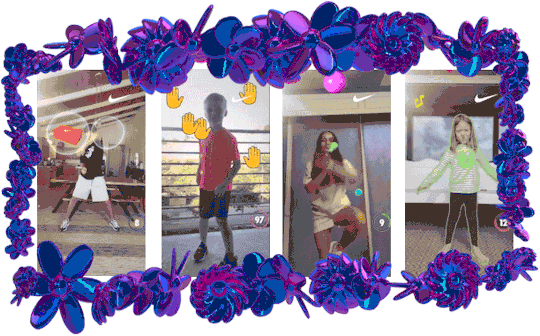














youtube
1 note
·
View note
Photo
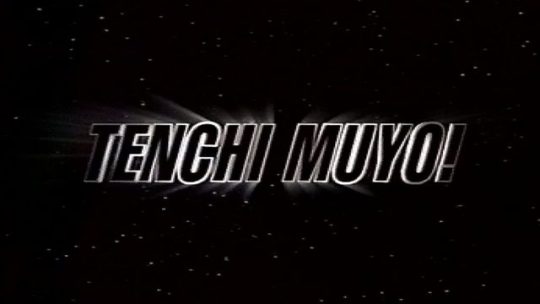
For the first time ever, the Toonami versions of OVA1/2, Universe, and Tokyo are available online! On their respective archive.org pages you can access each episode easily.
Watch now: OVA1/2, Tenchi Universe, Tenchi in Tokyo.
For users who keep up with contemporary anime communities, we also have an upload for the entire run available on Nyaa.
It’s been quite a journey in getting these episodes from analog to digital. If you’re interested in reading about the process of how these almost lost-to-time edits came into our hands and how we’ve gone about preserving them before the tapes rot, then sit back and enjoy the story below!
Part 1: Toonami – A Love Story.
Tenchi Muyo! and Toonami are tied together like the red thread of fate often times referenced in many East Asian myths. For those who aren’t aware, Toonami was a programming block on the Cartoon Network channel. Starting in 1997, it did one thing for anime that no other channel in the English-speaking world had ever done: showcased anime during “PrimeTime” (In North America at least, this was 4pm to 7pm Eastern Standard time). Before the internet, having this block of time meant having the most eyes on your product, meaning exposure was huge. Oftentimes whoever got on this block, regardless of the channel, was “made.”
However, it wouldn’t be until mid 1999, with a soft-rebranding, a new host, and an almost entirely anime-focused block, that Toonami would take over the world.
And on July 3rd, 2000, an entire generation was introduced to Tenchi Muyo! for the first time.
youtube
- The now legendary two minute Toonami promo.
Thanks to the efforts of Jason DeMarco, Sean Akins, Gill Austin, Sean Polinski, and the rest of the Toonami crew, the “Toonami generation,” still to this day, is the largest block of Tenchi Muyo! fans. Whether it was Toonami US, UK, or Australia. Tenchiforum is a testament to this fact. I personally would not be here were it not for Toonami, so to say that fans of Tenchi Muyo! hold Toonami in a high regard is an understatement.
I had always wanted to somehow, some way, get the Toonami version of Tenchi up for everyone to see again, but my old Toonami VHS recordings were long gone, and I figured trying to piece together the Toonami version from other people’s tapes would just be too hard with how many episodes were broadcast, that was until… 2012
In mid-to-late 2012, I found out that Pioneer actually released a home video version of what was shown on Toonami. It was simply released as “Tenchi Muyo!” in those big, white, clam shell VHS cases (that most people probably remember for old Disney movies). I felt as though I had struck gold! I was able to get a hold of the first two OVA, and was able to rip them to my computer.

- Vol. 1 & Vol. 5 of “Tenchi Muyo!” – No distinction was made that they were separate series.
Though I was high on my endorphin-induced nostalgia, I ran into a couple of unforeseen problems.
First and foremost, the equipment I was using was not great. I used an old StarTech composite to USB dongle and the software that came with it. While this isn’t necessarily bad at first glance (it doesn’t support Windows 10), I had no experience whatsoever in the field of digital transfer. While I think my rips were okay for the time, I knew even then that they were too low of bit-rate and the quality of the rips suffered for it.
Because I also had no VCR at the time that had S-Video output, I was only able to output from composite, which meant the whopping 240p equivalent VHS tapes look fuzzier than they probably should. (I realize that VHS is technically an analog format, meaning that a 1:1 equivalent digital representation is hard to pin down or that someone might argue that it did technically output 480i over composite, but basically it was 240p.)
Another problem was the software itself, I had no idea about Virtualdub, AmaRecTV, or other helpful capture software, so I only recorded at a lower bit-rate, again producing an inferior quality rip.
I also ran into the problem of showcasing the videos. Funimation (who now owns the vast majority of the Tenchi Muyo! franchise in North America) had finally started really cracking down on people uploading videos to Youtube. Even though my videos were not completely the same, the algorithm immediately flagged and blocked them. This led me to uploading the videos to Facebook. I had to cut them in half because of Facebook’s restriction to roughly only 12 minutes of video. Somehow in the process, some of the videos had audio drop out for a minute or two, and for some the audio dropped out completely.
Arguably the biggest blow though, was when I learned that this set of Toonami tapes was incomplete. Pioneer stopped producing the Toonami version for home video after they finished releasing Universe. Meaning, the only way to get the Toonami version of Tenchi in Tokyo, was hope that someone, somewhere, had taped it 11 years earlier.
While Tenchi in Tokyo has been getting more appreciation from fans as of late – thanks in part to most newer entries in the Tenchi OVA sucking harder than a vacuum – in the year 2000, it was the black sheep of the Tenchi Muyo! franchise. So expecting fans to have recorded any of it, let alone the entire series, was the long shot of all long shots. But even still, I made a post on the forum in 2013 asking if anyone knew anyone that might have anything.
Naturally, no one had any leads, and all of these previous problems meant that this project would, frustratingly, have to be shelved indefinitely.
Or at least, that’s what I thought.
Part 2: Deferred Dreams Don’t Die.
On April 5th, 2019, a person by the name of Talos dropped into our Discord server, and posted an introduction. Like so many, they had gotten into Tenchi through Toonami, but what would change everything, was this.

I couldn’t believe what I was reading, someone actually had it!
Instinctively, I reached out to Talos via PM to ascertain how to go about acquiring these tapes, and admittedly, to see how legit this claim actually was. Because the fact of the matter is, when you’ve been around Tenchi fandom as long as I have, you’ll quickly realize the best bullshitters in the world come from this fandom.
But Talos was more than the genuine article! They sent over pictures and an incredibly detailed analysis of the quality of their tapes, watching through them all again to prove to me that their claim was valid.
It can’t be said enough that this all would not be possible without Talos, their willingness to work with me and send me their own personal tapes that they’ve kept for almost two decades just goes to show how awesome they are and how much they care about the fandom.
So the deal was struck, and the dream that laid deferred for almost six years lived again.

- A time capsule from another era.
But with dreams from the past, come the demons that plagued them way back when. I still only had the setup I once had, and at this time I was really trying to be tight with my finances for a number of different reasons, but this opportunity was too good to pass up, I wasn’t going to let this dream go, even if it wasn’t perfect.
Talos’ tapes showed up, and I rolled up my sleeves.
So I put in the first tape, the first seven episodes of Tokyo, into the old VCR I used to originally rip the Pioneer tapes, a JVC HR-VP650U….
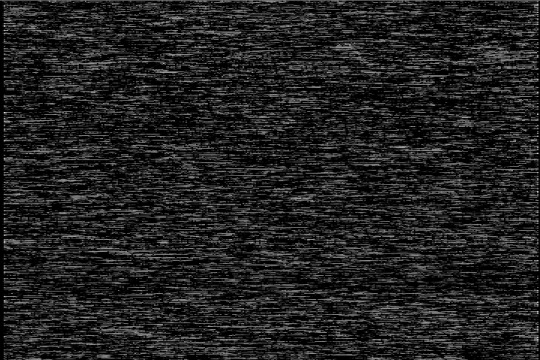
And static…
Or rather, a tape that would play for 3 seconds, then immediately drop to static.
This wouldn’t work.
I then tried my other VCR, a Sony SLV-N50 from the mid-to-late 90’s that I was able to “fix” by removing the old Android Kikaider tape that got stuck in there many years prior.
It worked!…..but…..not all that well.
While it did actually play the tape relatively smoothly, the colors were completely washed out in comparison to the JVC, and it had this weird color flickering that was particularly noticeable when black backgrounds were on screen. (This was not unique to this tape, it did it with everything I put in there.)
As much as it pained me, there was no way I was going to rip it with this setup.
So the hunt began for not just a replacement VCR, but one that was high quality and recommended among enthusiasts for digital transfer. Which meant research and long winding rabbit holes of non-answers and vagueness, and unfortunately, money.
Without a doubt, the de facto list of best VCRs for transferring comes from digitalFAQ.com. This list is not only informative but gives you a broad range of ones to look for in the event you can’t find an “elite” one. However, this list has also become the de facto list used by people who are hawking their sets on eBay to try and get every penny from enthusiasts and new-comers as possible.
After three frustrating weeks of losing bid wars on eBay, someone finally put up one of the good sets, the JVC SR-V10U. I quickly sent them what I thought was a reasonable but not bank-breaking offer….

And they accepted! The beast was finally mine.
Immediately upon unwrapping and testing it, the quality difference between what I had then and what I was looking at now was staggering. The SR-V10U had beautiful color, while having the incredible ability to stabilize the old tapes with its TBC (Time Base Corrector), as well as onboard Video Stabilization option. Combined with the ability to output video via the superior S-Video cable, I now had something that, despite its age and typical old VHS wear, was way better than I could have imagined.
Part 3: No Need for Nostalgia.
You’re probably thinking to yourself “Dagon, why go through the trouble? The OVA has a beautiful Blu-ray release, and Universe and Tokyo have pretty decent DVD releases. Why would you ever want to rip old VHS tapes of an inferior quality release that was in some cases censored?”

- The now famous Toonami “bikinis”.
Because this version of Tenchi Muyo! is a piece of history. Not only is it a piece of Tenchi history, but a piece of Toonami history as well. Being able to preserve this in the best quality possible is being able to point to future generations and say “This is why I’m here.”
For a lot of us it’s about taking us back to a simpler time, grade school, high school, university. Taking us back to a time before the internet was what it is today.
So now we can, after almost 20 years, re-watch the version of Tenchi Muyo! that brought so many of us joy and wonder.
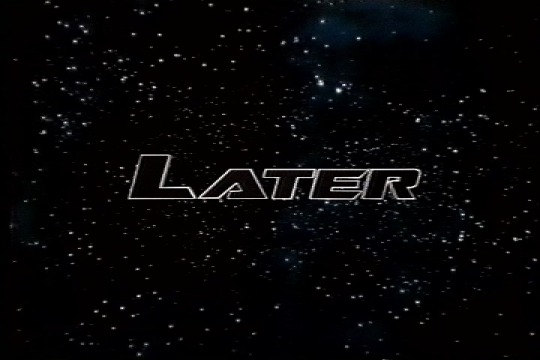
#tenchiforum#tenchi muyo#toonami#toonami promo#cartoon network#tenchi universe#tenchi in tokyo#toonami tenchi muyo#anime nostalgia#90's anime#vhs#vhs anime
59 notes
·
View notes
Text
Last January I did a workshop a performance at Fresh Festival in San Francisco as a part of Ponderosa On the Road curated by Adi Brief. Thank you to all my brave workshop participants and performers who did the somatic release of Choir of Emotions. We unfortunately don’t have a lot of documentation of this but here is some documentation I found on line of the project which I also did in Athens Greece at the wonderful festival Sound Acts. I’m so glad they documented this project so well!
youtube
I took over Betonest for the last incarnation of my artist residency program there. Caitlin Fisher was my steady collaborator and many waves of artists came throughout the month including our largest residency called THAW. I hope to create residences in Germany again COVID healing allowing, but next time I will be doing them at a smaller space called Quecke. This location is located near a forest and a beautiful Creek. I have collaborated with these hard working queer feminists before and their space is gorgeous.
Here are some photos of this residency time period April 2019. I don’t think I have worked so hard in my entire life, but giving time and space to the artists was worth it. To carve that space and time for conversation, collaboration and pure creation is so valuable. I just wish there was more resources given to what I do. My gardening actually funds these residencies! Canada Council for the Arts has told me that there is no funding for running residencies. If you have any ideas around this let me know. It’s been four years now of running successful incredible international artist residencies with no funding.
This slideshow requires JavaScript.
Also my dear friend E Hearte helped me apply to be a Media Artist, A Visual Artist and a Curator on the new Canada Council for the Arts portal. The curator bit was the most exciting for me to be acknowledged by Canada Council as a curator after over ten years of radical curations at all sorts of venues all over North America and Europe. Most queer artists have heard of me or I have curated them, so it was nice to finally get some professional recognition. Now I just need to get a grant! In all these years of art making Canada Council has yet to offer me one, so if you are a proofreader let me know.
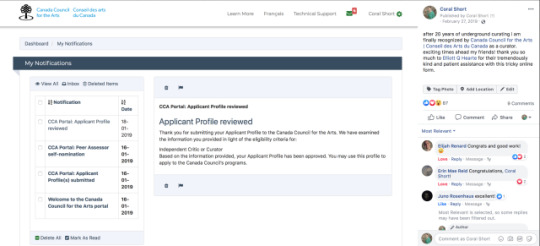
A beloved curator to many of us Mary Macdonald from Eastern Edge created these pins ART = WORK which I wore for many years until it eventually fell off. But now her foundation has now created these toques! Buy one here and support artists in Newfoundland and Labrador. She was a shining human full of support and love to all who knew her. I am sad she has left this world.

Last April I was in this curation by my longtime friend Kimura Byol.

This is the work that was screened. I filmed it in my kitchen holding a black sheet and my sweet ex boyfriend Logan Curley is the model.
youtube
While I was in silent retreat my partner and my distributor gave permission for my film Arrangement to be screened in Korea a country that I lived in and love dearly.
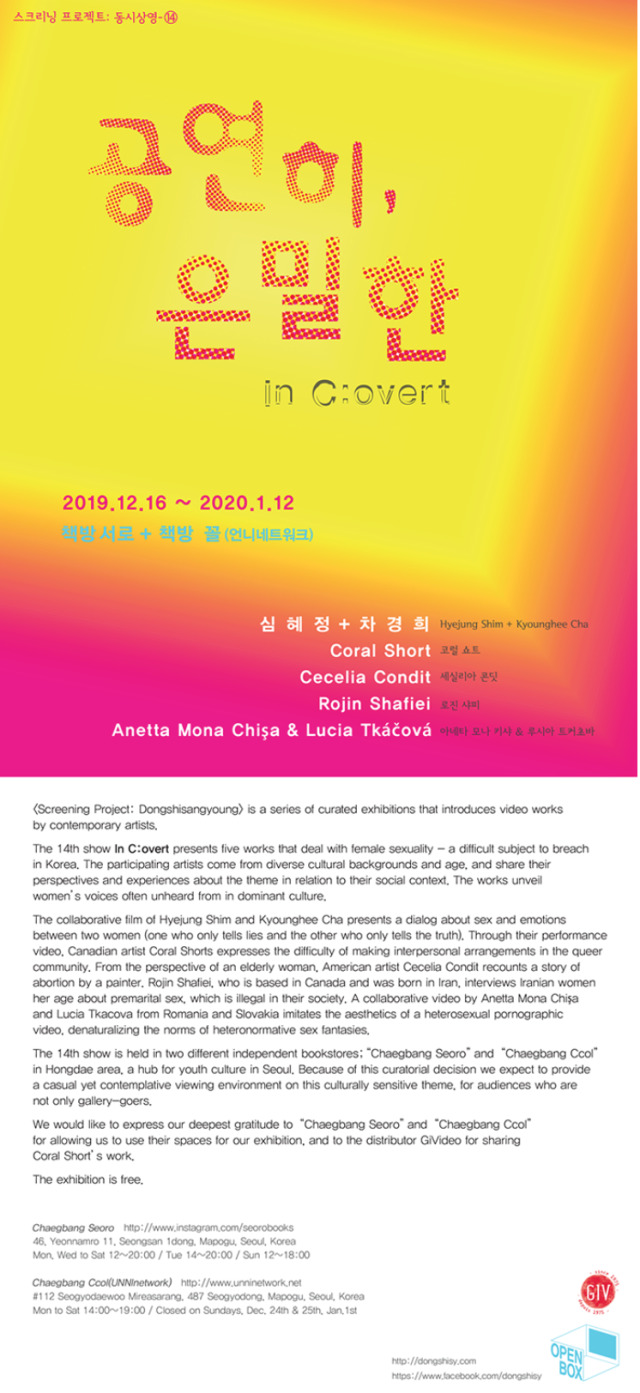
FLORAL SLEEP grows and grows!
2 radio shows, 2 WORKSHOPS and 2 SHOWS last year!
Last July Ryan Backer and I performed our project Floral Sleep at my work’s 10 year Anniversary party in July. And then we performed in October for True North Insight’s Birthday party for our founders Daryl Lynn Ross and Pascal Auclair. And then I gave a workshop for adults with Winnie Superhova and one for kids with Lari Jalbert. Thank you Studio XX for paying us well and giving us an ample budget for supplies. Goddess bless that feminist organization! And a huge thank you to my dear friend Lucas Crawford for writing about my work. Thanks also to xx files for interviewing us about the work which you can listen to here.
WELLNESS is the Watchword
“This word appears everywhere as the reason for us to slow down, most often attached to a product that promises to save you hours of time via speed. Paradoxically, if today’s wellness discourse were a slogan, it might be: hurry up and slow down!
Coral Short’s new project engages ASMR (Autonomous Sensory Meridian Response), in which exposure to everyday stimuli (usually noises, eg. nails tapping; eating sounds; whispering) induces tingling sensations and euphoria. ASMR seems built for speed, given its extreme popularity on Youtube. But where high-tech folks seek the latest watch to capture their running speed, Short’s technology of wellness here is like good BBQ cookery: “low and slow.” They move plant boughs around a circle of laying participants, stimulating them gently with plant sounds.
Corporations market WELLNESS as a series of inward-looking products. But Short’s work redefines wellness as the connective, outward-looking potential of queer pleasure. The tingling of Short’s plant-based ASMR isn’t about a romanticized notion of stopping to smell the roses – even if it is about listening to the breeze of leaves. The tingling is literal; ASMR is often described as arousing, and Short describes this project as “eco- sexual.”
We buy cutting-edge quick-fixes. Short’s project is slower and more direct: it provokes bodies to feel better on the smallest scale. This is wellness redefined as feeling good, undertaken at the level of the goose bump.
Coral Short has long thought about wellness in exciting ways. Where foodie blogs luxuriate in the slow self-care of “stress baking,” Short tuned up queer rhythms via an experimental band, Women With Kitchen Appliances. WWKA didn’t take up the ‘time- saving’ kitchen tools of gendered domestic labour as escape, but instead as slow public experiment.
Where fitness media often dangle a fat-phobic wellness carrot – the self-pride that supposedly follows when we can wear the new (smaller) shirt or new (sexier) boots – Short has again flipped the game in advance. They have sculpted and wore “Butter Boots,” aptly named. Similarly, at a Vancouver arts show, Short and their team of servers moved through the crowd, offering the show-goers fudge: “How would you like your fudge packed?”
Whether laughing or crying – witness “Crying Machine,” in which attendees sit next to Short while they chop onions – connection and wellness happen queerly in Short’s work.”
Lucas Crawford
_____
Coral Short (Montreal) makes art with landscape, performance, film, costume, and bodies.
Lucas Crawford (Fredericton) is a trans/fat/queer academic and poet.
Here are some photos of Floral Sleep.
During the pandemic my much anticipated spring residency BELTANE at Ponderosa has been canceled much to the dismay of myself and the 20 artists who had bought plane tickets to come. Looks like we may have to skip a fall residency with COVID and return hopefully in a year for our next residency.
During the pandemic Winnie and I created an online performance experimentation curation from the visual arts and dance communities we are a part of internationally. There was no audience just creators creating for each other – trying to process what is happening in visual and movement based practices.
You Do You
Zoom Screencap by Kimura Byol
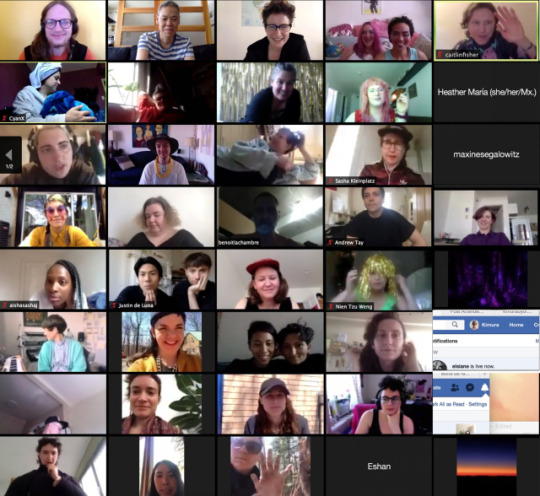
Alexis O’Hara (Montréal)
Cait Fisher (Berlin)
Cindy Baker (Lethbridge)
Coral Short (Montréal)
Eddy Levin (Berlin)
Eshan Rafi (Toronto)
Eva Wǒ (Philadelphia)
Holly Oakley (Chicago)
J’ean Park (Berlin)
Joachim Magdalena & Gambletron (L.A.)
Kimura Byol (Montréal)
Lailye Weidman (Turner Falls, MA)
Londs Reuter (NYC)
Magdalena Hutter (Berlin)
Rebecca Ladida (Eastern Townships, Québec)
Sarra Bouars & Kristianne Salcines (Berlin)
Winnie SuperHova (Montréal)
Andrew Tay (Montréal)
Lara Oundjian (Montréal)
Sasha Kleinplatz (Montréal)
Justin de Luna (Montréal)
Nien Tzu Weng (Montréal)
Lenore Claire (Montréal)
Zi Ro Buch (London)
Thea Patterson & Jeremy Gordaneer-Paintings/Sculptures (Edmonton)
Anouk Thériault (Montréal)
Aisha Sasha John (Toronto)
Kinga Mi (Montréal)
Pam Tzeng (Calgary)
Maxine Segalowitz (Montréa)
Moe Clark (Montréal)
Ralph Escamillan (Vancouver)
Nate Yaffe (Montréal)
Benoît Lachambre (Montrèal)
Victoria Hunt (Australia)
River Halen Guri (Montrèal)
A year in the life Last January I did a workshop a performance at Fresh Festival in San Francisco as a part of…
0 notes
Text
Creepshow is Coming to Halloween Horror Nights Hollywood

“Creepshow” will scare the creep out of guests when this all-new “Halloween Horror Nights,” maze, inspired by the 1982 cult classic movie and Shudder’s all-original anthology series, debuts as part of Universal Studios Hollywood’s wildly popular nighttime event, kicking off on Friday, September 13.
The original Creepshow movie, created by legendary director George Romero, and the all-new series, debuting on Shudder’s streaming service, reimagined by acclaimed make-up artist, director and executive producer, Greg Nicotero, invites “Halloween Horror Nights” guests to step into the anthology’s comic book pages to experience five terrible tales of terror guided by The Creep, the skeletal namesake of the comic book.
“I’ve partnered with Universal Studios Hollywood and ‘Halloween Horror Nights’ for years and it’s a thrill to bring ‘Creepshow’ to life for the fans as part of this year’s iconic event,” said Greg Nicotero. “I consider myself honored to have had the opportunity to work alongside George Romero and many other groundbreaking filmmakers who have inspired me. So to be able to create a television show based on the Creepshow movie, and then see it come to life as a ‘Halloween Horror Nights’ maze is a great way to pay tribute to this legendary filmmaker and introduce this incredible anthology series to a fans old and new.”
“We’re thrilled to bring this beloved horror classic to ‘Halloween Horror Nights’ as well as introduce our fans to the upcoming Shudder series,” said John Murdy, Executive Producer, “Halloween Horror Nights.” We’ve had a long association with Greg Nicotero as part of ‘Halloween Horror Nights’ and getting the opportunity to again work with his talented special effects team at KNB FX brings a whole other level of authenticity to this incredible maze experience.”
Capturing the essence of the original film that touted, “the most fun you’ll have getting scared,” to Shudder’s assertion that “a new generation of horror has risen from the dead,” the five frightening fables featured in the maze include:
· “Father’s Day” – Years ago Nathan Grantham, the cruel patriarch of the wealthy Grantham family, was murdered by his long-suffering daughter on Father’s Day. Now Nathan’s maggot-infested corpse has risen from the grave to take revenge on his inheritors…and finally claim his Father’s Day cake.
· “The Crate” – An unlucky janitor finds a long-forgotten shipping crate under the stairs of a science hall in a small east coast college. Little does he know, the crate contains a ravenous beast that’s been hibernating for over a hundred years…and it’s just woken up.
· “They’re Creeping Up On You” – Eccentric billionaire Upson Pratt lives in a hermetically sealed “germ proof” penthouse apartment in Manhattan but he still has a bug problem. When a citywide blackout cuts his power, Mr. Pratt’s pest problem is about to get a whole lot worse.
· “Gray Matter” – Ritchie Grenadine, an alcoholic former factory worker, unknowingly ingests a strange mutagen after guzzling a can of cheap beer. Now an alien fungus has taken over his rundown apartment and his body…creating in him an insatiable hunger that can’t be quenched by his favorite ale.
· “Bad Wolf Down” – The surviving members of a decimated American army platoon in the North of France during World War II are holed up in a small village jail awaiting the German army to overwhelm them. The clever lot, however, have an ace up their sleeve that the German’s won’t expect; the men are all werewolves and tonight is a full moon.
"Halloween Horror Nights" at Universal Studios Hollywood brings together the sickest minds in horror to immerse guests in a living, breathing, three-dimensional world of terror. Featuring an all-new slate of unrivaled film production quality mazes and frightful scare zones uniquely themed to today’s most definitive horror properties, “Halloween Horror Nights” will taunt, terrorize and torment guests with spine-chilling haunted attractions as part of Southern California’s most extreme Halloween experience.
All tickets for Universal Studios Hollywood are on sale now. Updates on “Halloween Horror Nights” at Universal Studios Hollywood are available online at Hollywood.HalloweenHorrorNights.com and on Facebook at: “Halloween Horror Nights – Hollywood,” Instagram at @HorrorNights and Twitter at @HorrorNights as Creative Director John Murdy reveals a running chronicle of exclusive information. Watch videos on Halloween Horror Nights YouTube and join the conversation using #UniversalHHN.
About Universal Studios Hollywood
Universal Studios Hollywood is The Entertainment Capital of L.A. and includes a full-day, movie-based theme park and Studio Tour. As a leading global entertainment destination, Universal Studios Hollywood delivers highly themed immersive lands that translate to real-life interpretations of iconic movie and television shows. Attractions include “The Wizarding World of Harry Potter™” which features a bustling Hogsmeade village and such critically-acclaimed rides as “Harry Potter and the Forbidden Journey” and “Flight of the Hippogriff™”, and the all-new mega attraction “Jurassic World—The Ride.” Other immersive lands include “Despicable Me Minion Mayhem” and “Super Silly Fun Land” as well as “Springfield,” hometown of America’s favorite TV family, located adjacent to the award-winning “The Simpsons Ride™” and DreamWorks Theatre featuring “Kung Fu Panda: The Emperor’s Quest.” The world-renowned Studio Tour is Universal Studios Hollywood’s signature attraction, inviting guests behind-the-scenes of the world’s biggest and busiest movie and television production studio where they can also experience such thrill rides as “Fast & Furious—Supercharged” and “King Kong 360 3D.” The adjacent Universal CityWalk entertainment, shopping and dining complex also includes the all-new multi-million dollar, redesigned Universal CityWalk Cinema, featuring deluxe recliner seating in screening room quality theatres, and the “5 Towers” state-of-the-art outdoor concert stage.
0 notes
Text
Zeitz Museum – timeslive Photo Iwan Baan
During this travel adventure I’ve wandered through museums and galleries in different European countries, but South Africa’s Zeitz Museum was always near the top of my list. I missed it in the past but made a point of popping in last week. The first and third floors are being renovated and closed to the public until August. I still saw plenty of incredible art and discovered interesting artists!
MOCAA at Dusk – Heatherwick Studio Photo Iwan Baan
History
Completed in late 2017, Zeitz Museum of Contemporary Art Africa (MOCAA) is a masterful creation by British architect Thomas Heatherwick. He converted a “century-old grain silo and historical landmark at Cape Town’s V&A Waterfront into a world-class art gallery”! The privately-funded Zeitz is not only the largest art museum in Africa but also the largest exhibition in the world “showcasing the art of Africa and its diaspora”.
Thomas Heatherwick Architect – The Architects’ Journal
_____________
“British architect Thomas Heatherwick was inspired to create an art institution on a continent as big as the whole of Europe and North America combined.”
_____________
Jochen Zeitz African Contemporary Art Collector – Segera David Crookes The B Team
The museum’s goal was bringing together works by African artists and “invigorating interest in African contemporary art”. MOCAA does the opposite of what the old grain silo did in the same space.
Koyo Kouoh MOCAA Director and Chief Curator – Zeitz MOCAA
“At the same time the V&A Waterfront was wondering how to develop an iconic, century-old grain silo African contemporary art collector and German businessman, Jochen Zeitz, was looking for a museum to house his collection.”
Zeitz Museum Atrium from Tunnel – timeslive Photo Iwan Baan
Purpose and Design
The Zeitz Museum is dedicated to “researching, collecting, and exhibiting art from the African continent and beyond”. The exhibition space covers 6,000 square meters (almost 65,000 sq. ft.) on nine floors, with 100 gallery spaces.
Zeitz Museum Atrium Vault – timeslive Photo Iwan Baan
_____________
During the old days, “grain was exported outwards from the silo. The MOCAA creates a place where African art can return and from where it will not leak away.”
_____________
Zeitz Museum Interstitial Space – timeslive Photo Iwan Baan
The interior is carved out in the shape of an enlarged grain of corn. The result is a “series of curved concrete lines with light pouring in through the cylindrical silo structures!” The brilliant design gives visitors a spectacular “cross-section view of the inner workings of the old industrial structure”.
Zeitz Museum Atrium – timeslive.co.za Photo Iwan Baan
Curator
Director and Chief Curator, Koyo Kouoh, has 20 years’ experience as an international curator. A native of Dakar Senegal, Kouoh developed art programs and served as curator of contemporary African art in London and New York.
MOCAA Cubist Stairway
Artists
I’m in awe of the many extraordinarily talented, award-winning African artists featured at the MOCAA. It’s slightly intimidating, and I’m still educating myself about African artists like Frances Goodman, Kendell Geers, William Kentridge, and Nicholas Hlobo. Works of a few favorites are detailed and highlighted in this post:
El Anatsui – Ghana
Sory Sanlé – Burkina Faso
Sue Williamson – UK and South Africa
Pamela Phatsimo Sunstrum – Botswana
Mary Sibande – South Africa
Joana Choumali – Abidjan Côte d’Ivoire
Neo Matloga – South Africa
Sue Williamson – Wikipedia
Sory Sanlé – YouTube
Joana Choumali – joanachoumali.com
Mary Sibande – Glamour South Africa
Pamela Phatsimo Sunstrum – Africa’s Out!
El Anatsui – el-anatsui.com
Neo Matloga
El Anatsui
El Anatsui was born in Ghana and currently lives in Nigeria. His career spams forty years as both sculptor and Professor of Sculpture at the University of Nigeria.
El Anatsui When I Last Wrote to You About Africa
He’s best known for his repurposing of alcohol bottle caps into large-scale hanging installations and creating art weaves from discarded materials of production, trade, and consumption created during the colonial expansion in Africa.
El Anatsui Aluminum and Copper Wire Brooklyn Museum – artefuse.com
_____________
El Anatsui’s work “breaks from the traditional cast of sculptural practice invoking a multi-layered, sensory re-imagining of our material world”. He’s “accomplished one of the very few genuine breakthroughs in contemporary art anywhere in the world today.”
_____________
El Anatsui TSIATSIA – Searching for Connections ruthball.weebly.com
His stunning sculptures appear in the British Museum London, Centre Pompidou Paris, de Young San Francisco, Metropolitan Museum of Art New York, Guggenheim Abu Dhabi, Osaka Foundation of Culture Osaka, Tate Modern London, and Museum of Modern Art New York.
He’s had many solo exhibitions and received awards and recognition all over the world. Some of El Anatsui’s best-known works include:
Fresh and Fading Memories – Venice
When I Last Wrote to You about Africa – Cape Town
Broken Bridge – Paris
TSIATSIA – London
Kindred Viewpoints – Marrakech
Sory Sanlé Burkina Faso
Sory Sanlé
Sory Sanlé is a Burkinabe photographer and owner of the Volta Photo Studio. He lives and works in Bobo-Dioulasso Burkina Faso.
Sory Sanlé Burkina Faso
Sanlé’s career began in 1960, the year Burkina Faso won independence from France. He’s known for documenting the “fast evolution of his own city, Bobo-Dioulasso,” and capturing the “frontal collision between modern life and centuries-old traditions from the culturally rich and rural region”.
Sory Sanlé Burkina Faso
He portrays Bobo-Dioulasso’s people with “wit, energy, and sheer passion”. His background paintings, be they a modern city, beach walk board, airplane, or antique column are outstanding.
Sory Sanlé Burkina Faso
_____________
“Sory Sanlé’s subjects illustrate the remoteness and melancholy of African cities landlocked deep in the heart of the continent and the natural fusion operating between tradition and modernity.”
_____________
Sue Williamson A Few South Africans – Winnie Mandela
Sue Williamson
Sue Williamson was born in England but her family immigrated to South Africa when she was seven. She studied art in New York and in 1983, was awarded a Diploma in Fine Art from the Michaelis School of Fine Art, University of Cape Town.
Both a journalist and printmaker, Williamson works “predominantly in installation, photographic images, and video”. Her work addresses social issues “pertaining to civil activism, citizenry, senses of community, or aspects of contemporary history as told from the perspectives of individuals”.
Sue Williamson A Few South Africans – Miriam Makeba
_____________
“I think early work in newspapers is quite formative in my art because of that sort of interest in people’s exact words and precise narratives.” Sue Williamson
_____________
Sue Williamson A Few South Africans – Lilian Ngoyi
In the 1980s, Williamson created a series of “photo-etchings and screen print portraits foregrounding the importance of women in South Africa’s political struggle”. In her work, Williamson emphasizes the “importance of revisiting history as a way of understanding a nation’s present”.
Sue Williamson A Few South Africans – Virginia Mngoma
“A Few South Africans (1983-85) is a visual narrative attempt to fill the representational absence of people and events during Apartheid, giving a tangible and iconic visibility to female leaders and women of courage who were active in the fight against Apartheid – Elizabeth Paul, Maggie Magaba, Winnie Mandela, Lilian Ngoyi, Annie Silinga, Nokukhanya Luthuli, Helen Joseph, Albertina Sisulu, Amina Cachalia, Caroline Motsoaledi, Virginia Mngoma, Charlotte Maxeke, and others.”
Sue Williamson A Few South Africans – Amina Cachalia
_____________
“We’re in the process of coming to terms with the past. I think that, before we can move on, we have to reach a point where we can find our way to a solution and say: OK, we’ve confronted our past as intensively as possible.” Sue Williamson
_____________
Sue Williamson A Few South Africans – Annie Silinga
Some of Williamson’s most powerful, best-known works include:
For Thirty Years Next to His Heart (1990)
Her Better Lives Series (2003)
There’s Something I Must Tell You (2013)
Sue Williamson A Few South Africans – Caroline Motsoaledi,
An internationally recognized artist, Williamson has active art exhibitions in South Africa and around the world. She served as Chairperson of the Visual Arts Group, founding member of the arts organization Public Eye, and founding editor of Artthrob, a website on contemporary art in South Africa.
All My Seven Faces Pamela Phatsimo Sunstrum – omenkaonline.com
Pamela Phatsimo Sunstrum
Born in Botswana, Pamela Phatsimo Sunstrum grew up in Canada, Sudan, Sri Lanka, Malawi, and South Africa. She attended the Baltimore Maryland Institute College of Art and University of North Carolina in Chapel Hill. Her solo exhibitions have appeared in the US, South Africa, and the UK.
Pamela Phatsimo Sunstrum
Sunstrum’s work “features black and brown people posed against somewhat contrived, hand painted landscape backdrops”. Sunstrum’s landscapes “expand on themes of timelessness” where she “reconstructs sites both real and imagined to reveal the small scale of individuals within the vast universe”. Her beautiful, complex work is fascinating!
Pamela Phatsimo Sunstrum
Pamela Pharsimo Sunstrum – pamelaphatsimosunstrum.com
Pamela Phatsimo Sunstrum
Some of Pamela Phatsimo Sunstrum’s exhibitions include:
Polyhedra
All My Seven Faces
There are Mechanisms in Place
Omphalos
Before Being Asked by the Machine
Space Station All-Stars
Let Me Show You My Ship – Pamela Phatsimo Sunstrum
_____________
Themes in Sunstrum’s exhibitions explore “mythologies and theories of the creation of the universe” and the “co-reliant relationship between science and mythology”.
_____________
Mary Sibande – In the Midst of Chaos There is Opportunity
Mary Sibande
Mary Sibande – sculptor, photographer, and visual artist – is based in Johannesburg. She was educated in Fine Arts at Witwatersrand Technikon and has a Bachelor of Technology from the University of Johannesburg. “Fascinated with fashion and fabric” Sibande focuses is on “questions of the body and how to reclaim the black female body in post-colonial and post-apartheid South Africa”.
youtube
Sibande “draws inspiration from her experiences growing up in South Africa”. Her focus on “the maid is cited as homage to her family, of which four generations of women served as domestic workers”.
Mary Sibande Long Live the Dead Queen – ruxandrabp.wordpress.com
Sibande works through an “alter-ego, Sophie, a sculptural figure who traverses the uncanny valleys of liminal space”. Sophie is a symbolic figure speaking for “femininity, blackness, labour, post-coloniality, and communities on the margin as a whole”.
____________
“My work is not complaining about Apartheid, or an invitation to feel sorry for me because I’m black and my mother was a maid. It’s about celebrating what we are as women in South Africa today. For us to celebrate, we need to go back to see what we are celebrating. To celebrate, I needed to bring this maid.” Mary Sibande
_____________
Some of Sibande’s works include:
In the Midst of Chaos There is Opportunity
Long Live the Dead Queen
A Reversed Retrogress, Scene 2
The Mechanism
Mary Sibande Purple Shall Govern – MAC VAL Musée d’Art Contemporai
Sibande has received awards and appeared at expositions and festivals throughout Africa and worldwide. She has been a research fellow at numerous institutions, including the Smithsonian Institute, University of Michigan, and Ampersand Foundation. She’s involved with ActionAid South Africa and the Young Urban Women Programme raising funds and introducing art to girls in low-income communities.
Sibande’s spectacular exhibit at the Zeitz – In the Midst of Chaos There is Opportunity – depicts “women in combat, modelled on the artist’s mother, a domestic worker in South Africa, riding toy horses and seen amongst blood-red canines and vultures”.
Joana Choumali Alba’hian
Joana Choumali
Joana Choumali is based in Abidjan Côte d’Ivoire. Before her career as a freelance photographer, she studied graphic arts in Casablanca and worked as an art director.
Joana Choumali Alba’hian
Her creations exhibit soft, subtle figures that “highlight the equal humanity of men and women”. Her style includes conceptual portraiture, mixed media, and documentary. Choumali “focuses on Africa, her assumptions about the diversity of cultures around her, and her expanding conceptions of the world”.
Joana Choumali Alba’hian
Joana Choumali Alba’hian
Joana Choumali Alba’hian
Joana Choumali Alba’hian
_____________
“Joana Choumali uses photography to explore issues of identity and the diversity of African cultures.”
_____________
Joana Choumali Resilients
Joana Choumali Resilients
Some of Joana Choumali’s best-known exhibitions include:
Alba’hian
Hââbré, The Last Generation
Resilients
Joana Choumali Hââbré, The Last Generation
Resilients documents young, professional African women who “struggle with connecting to their family’s traditional past”. To emphasize the link between past and present, the women were photographed wearing traditional clothing worn by their grandmothers or an older female relative. Hââbré, The Last Generation is about facial scarification across the Ivory Coast, a practice that’s dying out.
Neo Matloga – Tyburn Gallery
Neo Matloga
Born in Limpopo in 1993, Neo Matloga studied at the University of Johannesburg. His work is exhibited locally and internationally and on display in the City of Ekurhuleni, the South African Embassy in Washington DC, and in private collections. Matloga lives in Amsterdam, where he’s a “participating artist at a post-academic institution De Ateliers”.
“Influenced by one of his father’s art quotes, “art should heal psychologically” and the energy projected by South African youth, Matloga rejects limiting himself to specific artistic mediums. His paintings, drawings, and collages are versatile. They explore the Post-Mandela era and “mythic power of Sophiatown, an area outside Johannesburg”.
Neo Matloga
Matloga creates a nostalgic feeling by “collaging objects and materials that reference domestic households”. He produces “fragments of incredible happiness from his upbringing, conversations, and poetic moments he remembers from growing up in a Post-Mandela era.” The “main themes in his work centre around his passion for black people feeling that there is an ability to belong and exist”.
Neo Matloga
_____________
“As the legacy of apartheid persists, with no doubt there were and still are social issues such as crime and moral degradation, but none of this determined the concept of life in its entirety.”
_____________
Neo Matloga
Neo Matloga’s black and white paintings reflect the “domestic, daily life in black households in South Africa” – with a kick. Titles appear in his mother tongue, Sepedi, a language spoken in Mpumalanga, Gauteng and Limpopo provinces. His “cast of characters play out every-day dramas, experiencing the struggles and consolations of desire and intimacy”.
Neo Matloga Hugh Masekela – robynsassenmyview.com
“The people in Matloga’s paintings are ‘moral agents’ who are affected by the socio-economic and political conditions that shape life outside as well as inside the four walls of their homes.” His characters have “outsized eyes, mouths, and ears, skin tone with abrupt changes, hairstyles and hats sit atop the wrong heads, and accessories are often comically misplaced”.
Neo Matloga
_____________
Matloga’s characters are described as “hybrids”. He forms their faces by “collaging together photographic images of friends, family, and famous South African figures from politics and the arts”.
_____________
Neo Matloga
Matloga uses the process of “cutting, reconfiguring, and collaging facial anatomy” for political purposes and to “identify with the racist gaze”. I had to do some research on Matloga’s work to better understand it.
youtube
Neo Matloga solo shows and presentations include:
2019 Neo to Love – Fries Museum, Leeuwarden, Netherlands
2018 Good Morning Midnight curated by Tom Morton – De Ateliers, Amsterdam
2017 Molatelo – Christopher Moller Gallery, SCOPE Art Fair, New York
2016 Moo re Tswang Gona – Christopher Moller Gallery, FNB Joburg Art Fair
Zeitz Museum of Contemporary African Art Cape Town During this travel adventure I've wandered through museums and galleries in different European countries, but South Africa's Zeitz Museum was always near the top of my list.
#Abdulhay Jassat#ActionAid South Africa#African Contemporary Art#Architect Thomas Heatherwick#Arthur Goldreich#Artthrob#Brenton Maart’s curated South African Pavilion Imaginary Fact#Cape Town&039;s V&A Waterfront#Exhibition Polyhedra#Frances Goodman#Grain Silo V&A Waterfront#Harold Wolpe#Hââbré The Last Generation#Joana Choumali#Jochen Zeitz African Contemporary Art Collector and German Businessman#Kendell Geers#MAC/VAL Museum#Marshall Square Prison#Mary Sibande#Michaelis School of Fine Art#MOCAA Director and Chief Curator Koyo Kouoh#Mosie Moolla#Neo Matloga#Nicholas Hlobo#Pamela Phatsimo Sunstrum#Public Eye#Purple Must Govern Mary Sibande#Sue Williamson#The Order of Luthuli in Bronze to Amina Cachalia#University of Cape Town
0 notes
Text
Misunderstood in America
Misunderstood in America By Prathap Nair In 2005, when the infectious tunes of M.I.A’s breakout hit “Galang” from her debut dance album Arular made their way to America, it seemed like a natural progression for any artist from London to make. “M.I.A is making a concerted effort to crack America,” the Guardian declared. At the time, the blossoming Sri Lankan–British hip-hop artist, whose homemade album showed promise by marrying dancehall music with native (Tamil) beats, needed America, the quintessential pop-culture mecca, to launch her career that would eventually result in global fame. The Village Voice singled out the album for its “nursery rhyme tunefulness [that] breathed female principle.” But what’s even more intriguing about the review is that the writer, Robert Christgau, provided a lowdown on the Sri Lankan civil war between the minority Tamils and majority Sinhalese, to put some context into why there were lyrics like “I got the bombs to make you blow” in the song. M.I.A’s backstory — a radical Sri Lankan refugee artist with zero qualms singing about bombs — made her immediately noteworthy. Her political baggage arrived in America right alongside her music. Soon as it did, her troubles began. The video for “Sunshowers,” a single off Arular, was banned by MTV owing to its provocative lyrics ("You wanna go? You wanna winna war? Like PLO, I don’t surrendo,” PLO being the Palestine Liberation Organization) and her refusal to remove them from the video. Not long after, in 2006, she was refused a US work visa. In a way, her relationship with America soured before it even started. Naturally, things grew increasingly fraught: her unfettered outspokenness and politicized lyrics alluding to the civil war in Sri Lanka, an island most Americans are unfamiliar with (much less in 2005), were always in direct conflict with the commercial goals of the music industry. Besides, in the eyes of the industry, M.I.A’s politics were simply unmarketable. They provided no impetus to the success of her albums, a crucial benchmark in the industry; they sold on the power of their inventive rhythms and catchy beats, much more than for their lyrics. But M.I.A, whose full name is Mathangi “Maya” Arulpragasam, wanted to be more than just a chart-topping artist, and she wanted nothing to interfere with her advocacy. She repeatedly steered interviews toward politics in her early career, keen to outplay her standing as a mere entertainer to make a case about the war crimes against civilians in Sri Lanka. She beseeched Oprah on her MySpace blog, after meeting her at the 2009 Time 100 party, to speak about the refugee camps in Sri Lanka for war-displaced Tamils. In all caps, it said: “OPRAH CAN YOU DO SOMETHING BOUT THESE CAMPS PLEEEEEEEEEEASE?” If none of these actions were provocative enough, her decision to further amplify her activism with the video for “Born Free” in 2010 proved to be a pivotal moment. Its fake execution of ginger-haired children, modeled after the real executions of Tamil children in Sri Lanka (the horrific videos of which, she claimed, were freely circulating on the Internet), alluded to ethnic cleansing. Blowback to the video, directed by Romain Gavras, was swift, forcing YouTube to ban it briefly. Again, her message was lost in the din, and the shocking video only brought her more infamy. It’s little surprise, then, that a documentary that provides critical insight into her life is all but needed to unpack her complicated relationship with the world, mainly America. Directed by her longtime friend Steve Loveridge and sifted from taped vignettes (700 hours’ worth) often captured by M.I.A herself, it holds a mirror up to her rocky childhood, shaped by an absent militant father and a family upended by civil war. MATANGI / MAYA / M.I.A is a character study that goes into all the previously unscrutinized nooks and crannies of her life. She still seems to have a pressing need to tell the world her side of the story. “You want to see my story? I’m gonna show you my fucking story,” she declared with rightful contempt, looking into the camera at the opening of the documentary. Of all the moments in her life the documentary attempts to unpack, one thing stands out: her immigrant’s sense of rootlessness. Back in 2001, when the war was at its peak, M.I.A as an awkward youngster went back to the conflict zone in the north of Sri Lanka, armed with a video camera to record the lives of her relatives. By then a British citizen living in London, she received only patronizing dismissal from them. “You never had the war-zone experience,” says one of her relatives to her, perhaps refusing to make sense of her urge to connect with her roots. While she viewed the world’s apathy as unbothered complicity, her sense of rootlessness coupled with her need for belonging further fueled her need for activism. (See her refusal to dismiss her sense of identity inherited from her Tamil revolutionary father, who was once associated with training soldiers and building bombs to fight in the war.) When her father makes a rare appearance in the documentary while visiting his family in London, the siblings are conflicted. Dismissing her brother’s less-than-favorable view of her father, Arular, she says: “He’s made us damn interesting. He’s given us a bloody background!” Indeed. It might appear she desperately wanted her father’s wartime baggage to carry her personality forward and perhaps to inform her work as an artist — without which she may have believed and even feared that her life and work would lack the seriousness they needed and be reduced to the work of just another brown immigrant. In another revealing scene from the documentary, she says: “If I shut up and not talk, I’ll become a drug addict.” It's just one of those self-recorded-video moments, of which there are numerous instances in the film, that show a rare glimpse into her personality and her pressing need to articulate her strong notions without being fearful of consequences. Today, the Sri Lankan war that strongly informed her work is effectively over. At the face of it, perhaps the symbiosis that existed between her political activism and her music is over, too. But there are still other wars to be fought. When asked by the London Evening Standard about Black Lives Matter, she replied acerbically: “Is Beyoncé or Kendrick Lamar going to say Muslim Lives Matter? Or Syrian Lives Matter? Or this kid in Pakistan matters? That’s a more interesting question.” The statement was loaded and her way of stressing the need for inclusive activism, but it cost her a headlining act at the Afropunk festival in 2016. The same year, she announced that her politically subdued fifth album, AIM, will be her final one. She has been ambivalent about whether her activism helped initiate better understanding between the Tamil minorities and the Sinhalese in Sri Lanka, admitting that “meaningful reconciliation between Tamils and Sinhalese in Sri Lanka is not happening.” In response to a question about whether she cared to win the Mercury Prize for Arular, way back in 2005, she said: “What happens to an artist if they are relevant, if they do bridge the gap between England and America and the rest of the world, if they do explore new music? What happens to that artist?” She didn’t win the prize. In saying that, she revealed the vision of her music career: to bridge the gap between England and America. More than a decade and several albums later, overtly colored by her politics, that vision may have wavered off course. But doubtlessly, she stayed relevant in speaking out on issues like immigrant rights and open borders. That perhaps is a proof to the extent of her success. To study M.I.A’s life, purged of her political background, is to undermine her firebrand activism. But is it possible for her music career to exist, uncolored by her political activism, at least in some parts of the world? A Polish-German graphic-designer fan who watched her documentary at the Berlinale screening told me: “I had no idea her career was so controversial, much less about the conflict in Sri Lanka. I feel a little embarrassed for not knowing it.” For the rest of us, it’s the knowing that makes M.I.A one of the most important contemporary cultural forces to reckon with. Prathap Nair is a freelance writer based in Stuttgart, Germany. @thesunlitwindow MATANGI / MAYA / M.I.A debuts in theaters September 21 (UK) and September 28 (USA).
0 notes
Text
The Hunter, The Hoaxer, And The Battle Over Bigfoot
New Post has been published on https://kidsviral.info/the-hunter-the-hoaxer-and-the-battle-over-bigfoot/
The Hunter, The Hoaxer, And The Battle Over Bigfoot
Jeffrey Meldrum is a respected anthropologist risking his reputation to prove Sasquatch is real; Rick Dyer is a self-described “entertainer” unapologetically capitalizing off it. Their rivalry represents two sides of the fractious but booming subculture.
View this image ›
Illustration by Morgan Schweitzer for BuzzFeed
It’s a sweaty July day, and Rick Dyer is in his tank-like Toyota, barreling down a highway just south of Atlanta. It’s a comically oversize SUV, with a rack of roof lights and an exterior wrapped in flat-black vinyl. If Batman drove a Jeep, it would look like this.
Somewhere near the turnoff for a Christmas tree farm, Dyer abruptly turns into a sloping grassy median, then into a field of knee-high weeds beyond the road, then down a narrow dirt trail, where, after rumbling over an impressive heap of felled trees, we arrive at a small clearing just on the other side of a trailer park. Dyer, 37, is wearing a red T-shirt, red gym shorts, and a camouflage hat embroidered with a Bigfoot logo. His neatly trimmed beard frames a mischievous grin. “Let’s go do a Bigfoot investigation,” he says.
Moments later, we’re parked beside a trailer where a couple of boys are milling around a rusty grill. “Are you the one who called about Bigfoot?” Dyer asks. The pair looks confused. Soon, there’s a small gathering and Dyer explains that someone from a nearby trailer said that a Bigfoot attacked his car. “I went up there and checked it out, and his door from his car is ripped off,” Dyer says matter-of-factly. Someone asks what kind of car it was, and Dyer provides a make and model, and says a tow truck is on its way. If they see anything, Dyer tells them, please contact him through his website.
“What are you going to do if you find it?” a man in a basketball jersey and sunglasses asks.
“Well, I’ve already killed one,” Dyer says.
The boys look on in amazement as Dyer offers his bona fides. Look him up on Google, he says. They’ll read the accounts of how he bagged a Bigfoot. They’ll see the photos. Then, the boys scuttle away in search of the car with a missing door.
It’s an odd thing to witness such instinctive slipperiness. But Dyer is untroubled. To him, lying about one of the world’s most enduring wilderness mysteries is no different than a pro wrestler getting in the ring. “I’m an entertainer,” he likes to say. Or: “You can choose to believe my story or not.”
It’s been more than a half-century since a Northern California newspaper printed the headline that made “Bigfoot” a household name. In the decades since, no definitive proof of the large, ape-like creature that people also call Sasquatch (from Canada), Yeti (from the Himalayas), or Skunk Ape (from Florida) has surfaced. But the eyewitness accounts, the indistinct photos, the brief, blurry videos, the footprints — they’re as persistent as ever.
There are news stories about the latest sightings and YouTube clips purporting to show them. There are successful television series like Spike TV’s 10 Million Dollar Bigfoot Bounty, which premiered earlier this year, and Animal Planet’s Finding Bigfoot, now in its fifth season; on the channel’s website, there is a “Bigfoot Cam,” where “the search for Sasquatch goes 24/7.” There are countless groups and clubs and museums with names like North American Wood Ape Conservancy and Bigfoot Discovery Project. There are self-styled, expedition-leading Sasquatch “hunters” and online radio talk shows and origin theory-peddling experts.
Against this backdrop, Dyer’s anything-goes hustle means business. He markets himself as a “master tracker” after all, a label that is prominently attached to the short-sleeve camouflage button-up he wears.
As we get in the Toyota, Dyer delivers a full-throated roar. “They’re going to be talking about that for weeks and weeks and weeks,” he says. And yet, this off-road adventure is nothing compared to Dyer’s big hoaxes.
Over the last 50 years, allegations of devious men using wooden feet and fur suits have cast a long shadow over the Bigfoot phenomenon. But Dyer’s dark talents are rare. He’s an admitted serial hoaxer with a chameleon-like ability to cultivate a new persona for each gambit, from bumbling neophyte to Sasquatch evangelist to P.T. Barnum-like showman. “In the annals of Bigfoot hoaxers, he’s earned himself a place in the hall of fame,” says Benjamin Radford, the deputy editor of Skeptical Inquirer and author of Hoaxes, Myths and Mayhem.
As Dyer has become a wily villain in the Sasquatch scene, he has drawn outsize media attention, swarms of paying customers and fans, and loathing from the many people who consider Bigfoot a living creature. After a hoax earlier this year, a petition was posted on Change.org demanding that he be charged criminally (he has not been). Loren Coleman, the cryptozoologist and author of Bigfoot! The True Story of Apes in America, describes Dyer as a “disgusting phenomenon” who just won’t go away.
For this second variety of Bigfooter, the search for Sasquatch is a serious endeavor. They are modern-day explorers, amateur investigators, and even academically credentialed researchers who have sought to not only bring science to Bigfoot, but Bigfoot to science. While no bones, body, or DNA have been discovered, they argue that there is considerable circumstantial evidence that Bigfoot is real.
For these dedicated few, Rick Dyer is more than an entertainer — he’s a danger to a field of study that already has credibility issues. That they all toil under the same big tent is one of the great oddities of a subculture that is as crowded and fractious as ever, one that can seem like an amalgam of a cult and an earnest explorers club, with competing camps of believers and skeptics, hoaxers and hunters, self-appointed experts and serious-minded scientists, all seeking to advance, in their own peculiar way, the mystery of Sasquatch.
View this image ›
Photograph by Tim Stelloh for BuzzFeed
Jeffrey Meldrum’s office is on the second floor of a plain redbrick building in Pocatello, a college town in southern Idaho. It’s cluttered with books about anatomy and biomechanics, evolution and mammalogy. There are plastic skulls and wooden skulls, framed images of the surreal-looking red-faced uakari, and a silverback gorilla, his arms aimed piercingly straight into the ground.
Then, there is the Bigfoot stuff: hundreds of plaster foot casts believed to be Sasquatch, sitting on the floor, scattered on a work table, crammed into shelves. There are cartoons and tiny statues, books and envelopes labeled “hair.” Meldrum, 56, with a white beard, is wearing a black T-shirt with a pair of green eyes that stare back at me. “Sasquatch as seen through night-vision goggles,” he explains.
Against the far wall is a life-size image of the most well-known Bigfoot of the modern era: “Patty,” a nickname derived from the man who filmed her, an out-of-work cowboy named Roger Patterson. In a few dozen shaky seconds in 1967, Patterson captured her on film in the remote woods of Northern California striding along a creek bank. The footage, which he shot with the help of a rancher named Bob Gimlin, has remained an obsession, endlessly watched, dissected, debated.
An anthropologist at Idaho State University whose work on Bigfoot garnered a rare, significant endorsement from famed primatologist Jane Goodall, Meldrum specializes in the evolution of primate movement — he’s sometimes called “the foot doctor.” His scientific pursuit of Bigfoot began in the late 1990s with a brief question: “Is there a biological species behind the legend?” In the years since, Meldrum has analyzed hundreds of footprints, examined reams of supposed hair, and developed a working hypothesis. He’s trekked across dozens of miles of Western wilderness, where he says he’s had his own Bigfoot encounters, and in 2006, he published Sasquatch: Legend Meets Science. In addition to Goodall’s praise, the book won support from the pioneering field biologist George Schaller, who wrote that Meldrum “disentangles fact from anecdote, supposition, and wishful thinking” and has “done more for this field of investigation than all the past arguments and polemics of contesting experts.”
View this image ›
Jeffrey Meldrum with a plaster foot cast in his Idaho office. Photograph by Tim Stelloh for BuzzFeed
The year after Meldrum’s book was published, he developed a scientific name and set of characteristics for the creature’s mythically massive footprint; it is, he says, one of the few peer-reviewed papers supporting the existence of Sasquatch to appear in mainstream academic literature. A few years later, he founded a peer-reviewed journal that publishes Bigfoot research. Among his current collaborations is a project that would use a drone to fly over suspected Sasquatch habitat in the United States and possibly Canada.
Meldrum’s research has made him a lonely figure in academia and an unlikely public face on this side of the Sasquatch phenomenon. He’s become The Bigfoot Guy — the level-headed, go-to scientific authority for conference organizers, countless documentary filmmakers, and on-deadline reporters who may not know the first thing about Bigfoot but are calling to ask about someone named Rick Dyer who claims to have killed one. The two know of each other, and they’re not friendly.
When Meldrum was a kid living in Washington State in the 1960s, his father, a grocery store manager at Albertson’s, took him to see the documentary that featured Patty. He was taken with snakes, insects, dinosaurs — anything natural history-related — so it didn’t take much to get him to the Spokane Coliseum, where it was showing. Meldrum sat transfixed as Patty’s slow-motion image meandered across the screen. “The notion that there might be a caveman stomping around out there was fascinating to me,” he recalls. For him, there were no questions of authenticity. “It was like, ‘Here it is. Wow.’ It was a mystery to be explored.”
View this image ›
“Patty.” Still from Patterson Bigfoot sighting footage
At the time, Bigfoot was just beginning to lurch into the American imagination. Meldrum had no idea about the footprints found a decade before that produced the Bigfoot moniker. Nor did he know that for the Hoopa in California, for the Anasazi in the Southwest, and for many more, stories of wild, hairy men in the woods had been told for generations. The term “Sasquatch,” after all, was derived from the Salish tribes of British Columbia.
In 1993, Meldrum got a call from the prominent cryptozoologist Richard Greenwell. A television production crew in Northern California had been filming b-roll when they picked up what looked like a Sasquatch; when the crew wanted some expert opinion, they called Greenwell, who wondered if Meldrum wanted to tag along. Meldrum didn’t think much of Bigfoot anymore, but he wasn’t a strange choice: For years, theories had been floated that perhaps the Yeti was related to a giant ape that once lived alongside prehistoric humans. The creature was believed to have gone extinct, but perhaps it survived “in refuge areas,” as the primatologist John Napier suggested in 1973. Who better to examine the evidence than a primate expert?
Meldrum was skeptical, but he agreed. “I thought it would be an easy exercise in exposing the zipper,” he says. “Instead, I kept finding these different things that were quite compelling.” It was grainy video, and it was night, but he could see how its foot bent when it walked. He could see how the hair hung down from its arms, like an orangutan. They were able to determine its height too: more than 8 feet tall.
Then, after visiting the late Grover Krantz, the eccentric Washington State University anthropologist who was among the few academics to conclude that Sasquatch existed, Meldrum got out into the field. For the first time, he examined what were purported to be fresh tracks. They were 14 inches; there were a few dozen of them, pressed into the muddy foothills outside Walla Walla in eastern Washington, on the shoulder of a restricted-access farm road. When Meldrum bent down, he was astonished. He could see the telltale traces of a living foot, a foot where dozens of bones and joints appeared to be interacting with the ground beneath it. “I could see tension cracks, push-off ridges,” he recalls. “I could see toe slippage, dragging.”
This was not what happened when a blocky piece of wood was stamped in the mud, Meldrum thought. If it were a hoax, it would have been executed by someone who understood the subtleties of foot anatomy.
“As I sat there kneeling beside these tracks, I said, ‘Is this a path you’re willing to go down? Are you willing to preoccupy a portion of your attention, your career to this question, at the risk of jeopardizing your credibility?’ I’m looking at these tracks and I’m thinking, How could I not?”
View this image ›
Photo by Tim Stelloh for BuzzFeed
Rick Dyer and I are driving around an affluent black suburb of Atlanta, a neighborhood of large lots, elegant brick homes, and golf course lawns. In a driveway, he sees what he’s looking for: a black luxury SUV with low mileage and a low asking price. Dyer, who’s wearing his camouflage Bigfoot hat and matching “master tracker” button-up, is looking to flip it — this is his day job — and he’s sized up the seller immediately. “The oil is full but he doesn’t know what a jumper cable is,” he says. “What you’re looking at is the perfect person to buy a car from.”
After a quick drive around the block, Dyer tells the seller that the transmission is shot. It needs a rebuild, and thus, the $2,000 price tag just doesn’t make sense. The two men haggle for a moment, and eventually settle on $1,400.
Afterward, I ask Dyer what he’ll make reselling it.
“$5,500,” he replies.
“Does that include what you’ll pay for a new transmission?”
“It doesn’t need one,” Dyer says, chuckling. “But it does need some transmission work.”
It can be difficult to untangle basic details about a man who lies for a living and seems to have no connection to his past. I ask, for instance, if he’ll put me in touch with his sister, and, in a text, he says there’s zero chance she’ll talk to me. I ask who his oldest friend is, and he connects me with a chicken farmer in Virginia named Jackie Pridemore. Pridemore tells me that the two met a couple of years ago, after he wrote a rap song about Dyer’s Bigfoot exploits. Dyer says his mother is a country music songwriter, but he can’t tell me who she is because the “haters” in the Bigfoot scene will go on the attack. His car has been vandalized, he says, and a variety of pranks have been orchestrated against him and his clique of Bigfoot friends.
View this image ›
Dyer’s peculiar enterprise seems driven in part by money — he claims to have earned hundreds of thousands of dollars — though as Loren Coleman explains, there just isn’t that much to be made from Bigfoot hoaxing. (“It’s not like a stock market scheme,” he says.) Attention seems to be Dyer’s motivating force, and he is relentlessly on-message: The Bigfoot scene is filled with self-serious crybabies, and Rick Dyer might be a hoaxer, but he only hoaxes because, like Santa, Bigfoot brings joy to people. And really, you should listen to Rick Dyer because Rick Dyer is the only person to have ever killed a real live Bigfoot.
Dyer embraces the confusion. “I want people to write that I’m very deceptive, that I dance around stuff,” he says. “I want people to write all kinds of shit. I want people to write that I don’t have a body, so that when that time comes and I do, then it’ll make the people who said I didn’t look like idiots.”
Unlike Meldrum, Dyer was never a Bigfoot-phile. When he was a boy with a stutter growing up in Stockbridge and attending Christian school, he had never seen the Patterson-Gimlin film, as the grainy Patty footage came to be known, or heard of the persistent rumors surrounding it — that the fur suit had been created by the Hollywood makeup artist behind the original Planet of the Apes franchise, for instance. Nor had Dyer heard of Ivan Marx, the alleged hoaxer behind the 1976 film The Legend of Bigfoot, or of one of the other (alleged) classics: that the original “Bigfoot” prints from Humboldt County, California, came from a pair of carved wooden feet owned by a man named Ray Wallace.
Mainly, Dyer says, his interests, after a stint in the Army, were traveling — he went to Thailand, to Mexico, to Japan — and women; with three, he has seven children. But in March 2008, not long after he quit his job as a corrections officer at a state prison, Dyer’s first hoax was born. It happened while he and a friend, a police officer named Matthew Whitton, were hiking in Tennessee. It wasn’t exactly inspired. “I said, ‘Hey man, I saw Bigfoot,’” Dyer says he told Whitton. “He said, ‘Me too.’ We didn’t. I said, ‘Let’s do a Bigfoot hoax.’ He’s like, ‘OK.’”
They built a cheap website and started a YouTube page, where he and Whitton posted videos and advertised expeditions and gear. They were “the best Bigfoot trackers in the world,” they claimed and, as Dyer put it in one video, “they had some very compelling evidence” that would “change everything you knew about Bigfoot.”
“We thought we’d get a couple of hundred views,” Dyer says. “But it took off.”
After appearing on a Bigfoot radio show, Dyer and Whitton were in touch with a man named Tom Biscardi. Biscardi is a brash, self-described “real” Bigfoot hunter who is from Brooklyn, but now lives in the San Francisco Bay Area. He is also an accused hoaxer and the proprietor and “team leader” of the California-based Searching for Bigfoot Inc., which investigates sightings, and, through its website, sells all manner of Bigfoot paraphernalia. In Dyer’s telling, Biscardi told him that he knew they didn’t have a body. “But we can make a lot of money,” Dyer recalls him saying. In Biscardi’s version, Dyer’s the con man. “He’s a motherfucker,” Biscardi says.
“DO YOU KNOW HOW HARD IT IS TO FIND GOAT BALLS?”
Dyer and Whitton set about building a fake body; the plan was to present a staged, video-recorded autopsy in the tradition of the famously hoaxed alien autopsy film of the 1990s, Dyer says. He spent a few hundred dollars on a rubber costume, and filled it with a macabre mix of animal bones and innards: There were pig intestines. There was a cow jaw. For the genitalia, they went to a slaughterhouse. “Do you know how hard it is to find goat balls?” Dyer says. The body was placed in a deep freezer, which was slowly filled with water, then switched on. For an accompanying DNA analysis, Dyer found an opossum on the side of the road. He carved off a sliver and bled on it; the hope, he says, was to have the analysis come back as human.
View this image ›
Tom Biscardi displays one of the photographs given to reporters during a press conference on August 15, 2008 in Palto Alto, Calif. AFP / Getty Images IAN SHERR
In Dyer’s telling, Biscardi liked what he saw, and agreed to pay $50,000 for the finished product; Biscardi says that he never actually saw the body. “They gave me a piece of intestine,” he recalls. In the parking lot of a redbrick county courthouse in suburban Atlanta, Dyer and Whitton were given $50,000 in cash, and the freezer was loaded into a U-Haul and driven to an out-of-state “safe house.” Then, the pair flew to California, where Biscardi scheduled a news conference for noon on Friday, Aug. 15, 2008, at the Cabaña Hotel in Palo Alto. In a press release, Biscardi offered a few tantalizing details: Dyer and Whitton found the creature in the woods of north Georgia. It weighed more than 500 pounds. DNA tests were being conducted and the results would be presented at the news conference.
This last detail, says the author Benjamin Radford, was key to selling the hoax: No one had ever dangled a promise of that modern scientific marvel, DNA, before an audience desperate for direct evidence. An onslaught of media attention followed. Most was dubious, but there was plenty of it. Stories appeared not just in the local media, but in Scientific American and the New York Times, on CNN and NBC. “It was pretty fucking intense,” Dyer says.
View this image ›
Illustration by Morgan Schweitzer for BuzzFeed
It’s a cold, damp summer night deep in the Wyoming wilderness, and a night vision scope is pressed to my right eye. In the distance, the flickering black-and-green tree line looks like an ’80s-era computer screen. Beside me, Meldrum’s research partner, the wiry wildlife biologist John Mionczysnki, is sitting on a small canvas stool, accordion in hand, playing a lullaby-like Scottish folk tune, which he swears is a soothing animal lure. Periodically, he trades his squeezebox for a portable floodlight and scans the foliage. In front of us, Meldrum is stretched out on a sleeping bag, peering through binoculars into the inverted darkness.
We’re here in this boggy, bug-infested section of Wyoming because there have been Sasquatch stories dating back more than a century — everything from visual eyewitness accounts to elk hunters reporting what’s been described as Bigfoot behavior: something lobbing rocks in their direction. Earlier in the day, they spent a couple of hours trudging through the area, doing what they often do on these trips. They survey. Meldrum looks for traces of Sasquatch: footprints, hair, scat. He finds turned-over rocks — most likely a bear — and a long line of elk prints. He finds tufts of hair snagged on a branch. “Deer or elk,” he says. Mionczysnki, who’s also a botanist, catalogs the flora. He notes the sorts of things that might satisfy the appetite of a large mammal — the pocket gophers, the carbohydrate-rich sedges, the limber pines and their high-calorie pine nuts, the lily ponds and their fish and insects and frogs, the thistles, a favorite of gorillas.
This is a fairly routine night of research for Meldrum. Fifteen years ago, he had been so impressed with the footprints in Washington State that he ignored his inner pragmatist and decided to seriously pursue the question of whether an ape-like creature could have made them. He was untroubled by the lack of additional evidence: bones of uncommon top predators are rarely found and the fossil record is notoriously patchy. Plus, the discovery of new mammals — some of them large — is not unheard of. In 1994, a rare species of ox was located in Vietnam. The following year, a breed of prehistoric horse was found roaming in Tibet. In 2001, the three-toed pygmy sloth was identified in Panama.
“IT’S SO EASY TO SAY, ‘OH, IT’S JUST A MAN IN A FUR SUIT’ UNTIL THEY SEE IT BESIDE A MAN IN A FUR SUIT.”
So Meldrum’s search began in earnest. One element was a close examination of plaster foot casts and footprints that appeared credible. He thought enough of them that he told me, “It’s the most elegant adaptation of a giant bipedal” — or on two legs — “primate living on the ground in steep mountainous terrain.” Another still-ongoing project has been a collaboration with a costume and robotics designer to reexamine the footage he first saw as a young boy in Spokane. “It’s so easy to say, ‘Oh, it’s just a man in a fur suit,’” he says. “Until they see it beside a man in a fur suit.”
Finally, there was fieldwork, and the hope of acquiring DNA from hair, or perhaps shooting some high-quality photos or video. And that required money. Bigfoot was hardly a burgeoning research subject in academia, though. As University of Florida anthropologist David Daegling observed in Bigfoot Exposed, “Within the Ivory Tower, it is perfectly legitimate for a folklorist to pursue unicorns; for a biologist, it is a foolish commitment of resources.” (A letter circulated at Idaho State signed by more than a dozen colleagues complained that Meldrum’s work was “fringe science.”) So, like many Bigfoot searchers before him, Meldrum secured private funding. With money from a wealthy oil and gas businessman in Texas, a foundation in California, and others, he planned weeks-long expeditions to the remote corners of the West where, often with Mionczysnki, he spent many nights listening, watching, and waiting.
Meldrum has stories of encounters from trips like this. He was weeks into a month-long expedition in Northern California when, late one night, he heard something rummaging through his guide’s pack. The two men jumped out of their tents, but whatever it was disappeared. Not long after, Meldrum heard footsteps. “I could hear the pat-pat-pat coming right towards me,” he recalls. “It brushed against the fly of my tent and hit the pole.” He called out to make sure it wasn’t his guide, then leaped from his tent. As he chased after it, he could hear it splashing through a marsh, and when he pointed his flashlight at the mud, he could see a pattern: right-left-right-left. Each track was about 16 inches. Then, it vanished.
It’s a dramatic story, but it’s among the most compelling pieces of evidence from Meldrum’s expeditions. He’s collected no DNA, and he’s gotten no photos and no video. When I ask if this gives him pause, he tells me that a combination of variables (including bad weather) and the nature of the work — “You’re looking for a moving needle in a haystack,” he says — can make this an all too common experience in wildlife tracking. Based on the evidence he’s seen, he’s concluded Sasquatch is a living thing, a large, upright ape of which there are a couple thousand west of the Mississippi in Canada and the United States.
Sitting in our camp, the three of us look beyond a narrow, shallow creek, toward a large pine tree to which Meldrum has strapped a camouflage digital camera with a built-in motion detector. If a Sasquatch is going to appear tonight, he and Mionczysnki reason, it’s going to come from the area that they surveyed earlier in the day.
So we wait.
View this image ›
Photograph by Tim Stelloh for BuzzFeed
In the summer of 2008, Meldrum was among the first to weigh in on the hoax from north Georgia. Even before the Palo Alto news conference, during which Biscardi distributed a close-up photo of the teeth — “It’ll prove to you people that this is not a mask,” he said to the crowd — Meldrum told Scientific American that it looked exactly like the thing it was: “a costume with some fake guts thrown on top for effect.”
It took just a couple of days to unravel. In Dyer’s telling, it was over money. Someone at the so-called safe house wanted more, but Biscardi refused to pay, and, lest he be extorted, outed the hoax. In Biscardi’s version, he got a call from a costume maker who claimed that Dyer’s body matched their product. So Biscardi instructed his associate at the safe house to heat the slab of ice. “Seven hours later, they call me back and say it was a rubber suit with body parts,” Biscardi says. So he confronted Dyer and Whitton. “I say, ‘Is there anything you want to tell me?’” he recalls. “They say, ‘Oh no.’”
Biscardi says he contacted Fox News, and a wave of stories about the boys from Georgia followed. Biscardi pursed fraud charges, and though they were unsuccessful, Whitton was fired from the Clayton County Police Department. (He and Dyer are no longer friends, and Whitton couldn’t be reached for this story.) For Dyer, though, the event served as a strange entry point into a new hustle. People kept contacting him, wanting to go on Bigfoot expeditions, he says.
View this image ›
So Dyer obliged. He created a new storyline, and presented himself as a reformed hoaxer. “He said that he had seen Bigfoot, and that he was on a mission to redeem himself,” a documentary filmmaker named Morgan Matthews told the Canadian Broadcasting Company last year. (Dyer would later appear in one of Matthews’ films.) Dyer made T-shirts and hats, and he took people on what were little more than backcountry fishing trips that ranged from two days to two weeks in Tennessee, Texas, north Georgia, California, and beyond.
Among the people to contact him was Matthews, who was working on a project about Bigfoot hunters. And so began Dyer’s next hoax. It’s a convoluted tale that begins, of course, with the real killing of a real Bigfoot.
During the summer of 2012, Dyer and Matthews embarked on a week-and-a-half-long expedition in a forest on the edge of San Antonio. On the morning of the sixth day, Dyer says he awoke to the sound of bone crunching; he looked out of his tent and saw what he claims was a large creature with reddish-brown hair. It was, Dyer says, his moment of conversion to Bigfoot believer. “I was in shock,” he says. “I didn’t even think Bigfoot exists.”
Matthews didn’t respond to interview requests, but Dyer claims the filmmaker captured the encounter on a high-resolution camera. Dyer, meanwhile, says he got it on his cell phone. But they wanted more. So that day, Dyer says, he and Matthews bought a rack of ribs from Walmart and Dyer nailed it to a tree at their camp. Then, they waited. Around 11:30, Dyer says he heard footsteps and twigs snapping. He jumped out of his tent and, with Matthews chasing him, ran after the creature. Dyer had his .30-06 hunting rifle; Matthews had his camera. In the end, Dyer says, he fired three shots at the thing, killing it.
Within a couple of weeks, Dyer says he uploaded video footage to YouTube, where it vaulted into the pantheon of furiously debated Bigfoot films. Andrew Clacy, a 47-year-old former television news cameraman and longtime Sasquatch enthusiast in Australia, was among the converted. He knew about Dyer’s history as a hoaxer, but he didn’t care. “Everyone overlooked it because we thought he had the real deal now,” Clacy says. “We thought it helped lead him to the real thing.”
When Meldrum got involved, the spectacle turned nasty. Two pro-Dyer amateur researchers visited Pocatello, Meldrum says, hoping to convince him of the body’s authenticity. It had already been autopsied, and DNA and tissue samples had been obtained, Meldrum recalls them saying. Plus, they had seen it. Were Meldrum to examine it, he would receive a $10,000 bank check; were the body to be proved a fake, he could cash it. When Meldrum declined, they upped the offer to $15,000. Meldrum says he laid out his terms: He’d need high-quality photographs posted on a secure website; he’d have to independently verify the credentials of the experts who examined it; and he’d need a no-contest stipulation for a fraud lawsuit in the event that the body was a fake. “I said, ‘This should be a no-brainer,’” Meldrum recalls.
There was no deal, and a video soon appeared on YouTube. In it, Dyer is wearing a cowboy hat and a striped short-sleeve button-up. In one hand, he’s holding a bottle of lighter fluid; in the other, he’s waving Meldrum’s book, Sasquatch: Legend Meets Science. “Dr. Jeffrey Douchebag Meldrum,” Dyer says to the camera. It’s dark, and Dyer is surrounded by a small audience. He looks like a drunk preacher as he reads aloud: “He knew his footprints were fake, but he thought in his mind, ‘Hey, there’s never going to be anything to compare it to.’ Until Rick Dyer. You’re busted, Mr. Douchebag.”
Dyer sprays the book with lighter fluid and drops it on the concrete. One of the men emerges and lights a match. Eventually, Dyer unzips his fly. “Roasted nuts,” someone says. The group laughs.
View this image ›
Illustration by Morgan Schweitzer for BuzzFeed
Meldrum has done his best to avoid a cage match with Dyer, to keep Bigfoot madness at the margins. But if one of Meldrum’s goals has been to rescue Sasquatch from the ditch of tabloid mania and force high-minded scientists to at least consider the evidence, he doesn’t appear to have made much progress.
There are a couple of exceptions. A decade ago in Bigfoot Exposed, Daegling examined Meldrum’s footprint work and concluded that he hadn’t considered plausible alternatives for the anatomical detail that he saw. With Patty, Daegling was noncommittal, saying that while the “dynamics” of her movement appeared real, it could have also been a very, very good costume.
Then, earlier this year, a molecular biologist from Oxford published the first-ever systematic DNA analysis of 30 hairs collected from around the world that were purported to have been collected from Sasquatch-like creatures. The results were not good for Bigfoot — they came back as horse, cow, raccoon, bear, even human — though the biologist, Bryan Sykes, seemed troubled by the lack of interest in the subject. “Science neither accepts nor rejects anything without examining the evidence,” he wrote.
I wanted to find out if Meldrum had convinced any of his colleagues to take Bigfoot seriously, so I assembled a brief anonymous survey and sent it to 10 anthropologists at 10 universities who specialize in primates. I asked if they were familiar with Meldrum’s work on Bigfoot and what they thought of it. I wondered if they thought Bigfoot could be a real species of primate and if it deserved to be considered by science. I heard back from three.
All of them knew of Meldrum and respected his non-Bigfoot research, but none were convinced that Sasquatch should even be examined; their argument, in essence, was that Bigfoot isn’t possible. “A mammal that large going undetected and undocumented in the Western United States for this long defies all probability and logic,” one said. When I asked what they thought it was, all three said a hoax. Or, as one put it, “a compound of hoaxing, confusion, hallucination, and folklore.” Meldrum is used to this. Once, when he tried to present Bigfoot-related research at a meeting of the American Association of Physical Anthropologists, his submission was rejected. The program chairman later related the comments of one reviewer. “This is just not a subject that is of general interest to the anthropological community,” Meldrum recalls him saying.
In Meldrum’s view, the scientific reaction isn’t so much about evidence — though he did publish a scathing review of Bigfoot Exposed and he doesn’t have kind words for the molecular biologist. In his telling, it’s mostly a perception problem. Some academics have encountered little more than the tabloid mythology. Or the hoaxer. Others are overwhelmed by the intensity of the Bigfoot scene. “When a serious scientist shows some interest in the subject, they often become inundated with correspondence and contact requests from the amateur enthusiast community,” he says. “And there are some real strange people out there.”
View this image ›
Courtesy of Rick Dyer
In Rick Dyer’s telling, he believed that Morgan Matthews’ documentary, Shooting Bigfoot, would prove him a reformed hoaxer. He believed it would contain the high-quality version of that brightly lit, early morning encounter, and on his Facebook page, he began a countdown to last year’s Hot Docs film festival in Toronto, where the movie was to premiere. “I built it up like you wouldn’t believe,” he says. The film, however, contained just one brief scene from that night — Matthews chasing Dyer into the woods, then getting knocked over by something big and mean-looking. Its werewolf-like face and arm flash across the screen. Soon after, the movie ends.
Speculation cascaded: Was the shooting staged? Had Matthews participated in an elaborate hoax? Where was Dyer’s body? Matthews has remained cagey on the matter, telling the CBC, “There was something quite extreme” at the end of his film that “may or may not have been a close encounter.”
Dyer says the corpse was moved to a secure facility, and his investors were unwilling to release it. He was losing patience; he had a fanbase to satisfy, after all, and he wanted to capitalize on the attention. “I saw an opportunity,” he says. “I said, ‘Let’s make money off a fake one and let’s make money off a real one.’” Like the traveling sideshow exhibits that once enthralled 19th- and 20th-century audiences, he would tour the South, spinning fantastic Bigfoot tales. And he would show the evidence.
In the final weeks of 2013, Dyer assembled a small team that included Clacy, the Australian cameraman, and a few other fans. From a Spokane-based toymaker, he says he commissioned a $4,000 latex, Styrofoam, and camel-hair Bigfoot, which he called Hank and placed inside a plywood-and-Plexiglas box. It would be viewed in a trailer, which would be attached to a motor home. The whole enterprise, which Clacy says was underwritten by two investors and an $80,000 loan, would rumble down the highway wrapped in gaudy, impossible-to-miss advertisements that included a massive photograph of Dyer’s cowboy hat-clad head next to the comic book text of his pitch: “See the only dead Bigfoot.”
In Clacy’s telling, he had no idea Hank was fake. He packed up his home in Wodonga and flew to Las Vegas, where Dyer was living at the time, because he believed Hank was the creature shot dead in Texas. “We wanted to be part of history,” he says. (Dyer disputes this, saying Clacy knew that it was a hoax.)
Despite a dismal start in Phoenix in January, Texas proved lucrative. From Amarillo to Houston, San Antonio to Katy, Hank was presented in flea markets and a Home Depot parking lot, at Alamo Drafthouses, and, when passing drivers flagged them down, on the side of the road. Dyer says he usually charged between $5 and $10 a head, but for the roadside stops, he claims $100 wasn’t uncommon. About 10 people could fit in the trailer at a time, and the routine was fairly brief, Clacy says. He would tell the story of how Dyer killed Hank, and he would use the photographs on the wall as supporting evidence. “I think we had a 95% belief rate,” Clacy says, adding that even taxidermists and a medical doctor in Paris, Texas, seemed convinced.
The media was incredulous. In Las Vegas, before the tour even started, a reporter from Esquire wondered why anyone would believe an admitted hoaxer, while Meldrum was again asked to weigh in, this time by a reporter from the Christian Science Monitor. “The thing has clearly been fabricated,” Meldrum said. “It smacks of images of alien autopsy.”
Clacy says his suspicions grew, but they were tempered by the endorsements from the taxidermists and the doctor (who he now thinks may have been a fake too). Finally, in March, in Daytona, Florida, he says Dyer confessed. It was Bike Week, and they were in the parking lot of an event. “He said, ‘I needed you to believe,’” Clacy recalls. “I feel like an idiot,” he adds. “I believed a con man.”
View this image ›
Hank with Jimmy Smith II and Jimmy Smith at his new home in Denver. Photograph by Tim Stelloh for BuzzFeed
In the days after, Dyer revealed the hoax in a long, blustery video message on Facebook because, he tells me, “I didn’t want no one else to bust it.” Half a year later, he still claims to have the body of the thing he killed with Morgan Matthews, and he’s still sanguine about his Southern tour. “It’s entertainment,” he says. “If you want to believe I would haul around a life-changing specimen in the back of a $10,000 trailer, then you go ahead and believe it.”
Afterward, Dyer sold Hank to a marijuana dispensary in Denver called Mr. Nice Guys. The owner, Jimmy Smith II, says he bought it for $5,000, and that he’s planning to build a terrarium for it. “I look at it as an investment,” he tells me.
When I met with Dyer in July, he told me he was planning a news conference for early next year to unveil the body of a Bigfoot — for real this time — and he was offering full-access viewings for $150,000. By September, though, he was promoting a new project, a Bigfoot hunt in Pennsylvania.
View this image ›
The body Dyer claims is a recently killed Bigfoot. Courtesy of Rick Dyer
On a Sunday morning a couple of weeks ago, Dyer sent me a text saying that his “team” killed a Bigfoot the night before. He forwarded “exclusive” photos of something wrapped in a blue tarp, of his friends unloading ice bags from a shopping cart, of him in a camo hat and camo shirt attaching something to the roof of his black Toyota. Later, an image of what looked like intestines arrived on my phone. “That’s the inside of the Bigfoot,” he said. The creature, Dyer told me, was found outside Hazelton, and like most Eastern Bigfoot, at least as described by Loren Coleman, it was small: 5-foot-7 and a few hundred pounds. “I got this one in my possession and it can be proven,” he wrote.
When I tell Meldrum about some of Dyer’s plans, he chuckles and offers the “Fool me once, fool me twice” line.
“What about a third time?” I ask.
He laughs. “Double shame on me,” he says.
View this image ›
correction
A previous version of this story referred to the Patterson-Gimlin footage as having been in black-and-white. BF_STATIC.timequeue.push(function () document.getElementById(“update_article_correction_time_4210166”).innerHTML = UI.dateFormat.get_formatted_date(‘2014-11-08 10:14:49 -0500’, ‘update’); );
Want to read more stories like this? Sign up for our Sunday features newsletter, and we’ll send you a curated list of great things to read every week!
View this embed ›
Read more: http://www.buzzfeed.com/timstelloh/the-hunter-the-hoaxer-and-the-battle-over-bigfoot
0 notes